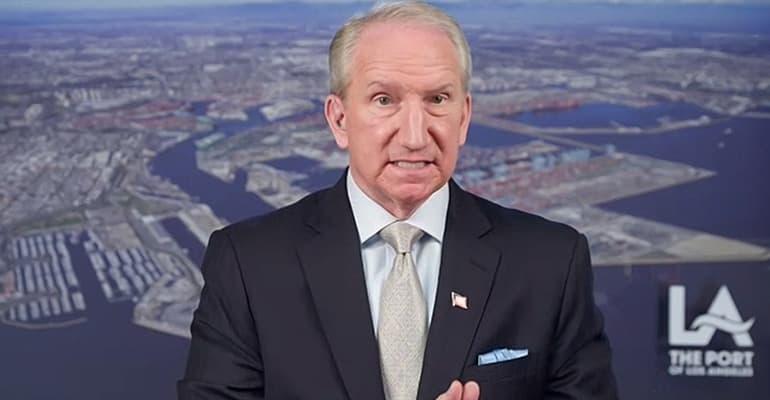The monthly media briefings from the Port of Los Angeles (POLA) offer great insights into cargo flows, as well as broader trends. While the late October briefing contained some important insights re cargo movements- tied to the retail/ consumer demand patterns, comments from Gene Seroka, the port’s Executive Director, emphasized several important developments on the sustainability front- which will be powerful drivers for trade flows going forward.
Speaking as the Zoom call was wrapping up- and following a question about California’s soon to be tightened rules on carbon emissions (already impacting container and cruise vessels in the ports), Seroka emphasized the Port of Los Angeles’s just-announced status as a participant in one of seven “Hydrogen Hubs”; a public private partnership in California will be receiving as much as $1.2 billion of U.S. Department of Energy funding. A release from the port, the previous week, had said: “The ports of Los Angeles and Long Beach, the nation’s largest seaport complex, are project partners and will receive a portion of the state’s grant funds to advance the use of hydrogen fuel in goods movement. These funds, which will be equally matched by the ports and their tenants, will involve deploying hydrogen fuel cell cargo-handling equipment and mobile hydrogen fueling trucks or stations in the ports’ terminals. Subsequent phases will add additional cargo-handling equipment…” In the media briefing, Seroka said, “This announcement provides an enormous boost towards our goal of decarbonizing port operations…” and stressed the port’s role, over the past few years, in testing hydrogen powered equipment (fuel cells and hydrogen fueled equipment) on the quays.
Seroka also provided an update on POLA’s role (along with Port of Long Beach, across San Pedro Bay) in establishing “Green Corridors”, linking with ports in Asia. He highlighted a linkup with Shanghai- with carriers including CMA-CGM, Maersk, the ONE Alliance, and Cosco Shipping Lines, citing the port partners’ intent to “…deploy reduced or zero life-cycle carbon capable ships in our corridor by the year 2025.” He also cited agreements in place with Tokyo, Yokohama, Nagoya and Singapore to develop similar corridors, and mentioned an upcoming meeting with representatives from Guangzhou to create a green corridor.
As far as the prospects for cargo movements, Seroka’s view had nuanced differences from that of guest speaker Matt Shay, President / CEO of the National Retail Federation- representing the massive retail industry in the States. Though cargo moving through POLA overall during Q1-Q3 2023 is trailing year-earlier Jan – September figures (overall 7.9 million teu in 2022 as post pandemic buying kicked in, versus 6.4 million in 2023), August and September 2023 saw gains over 2022. With Seroka was looking for an uptick in cargo moving into POLA to continue through 2023’s Q4 (with October flat, but with an uptick in November and December, and 8.6 million TEU’s overall for 2023), Shay commented on shifting attitudes in the retail business. He suggested that “The combination of consumers changing their behavior <”…shopping earlier than ever for the Holidays…”> and retailers not wanting to repeat a season of not having all the goods they needed <referring to the stockouts of 2021> has pulled a lot of the <cargo moves> forward.” He said, “So, I think we’ve seen most of that cargo come in already, and we’ll see it tapering.” Shay suggested that cargo import moves during August may have represented the 2023 peak.
Copyright © 2024. All rights reserved. Seatrade, a trading name of Informa Markets (UK) Limited.
Add Seatrade Maritime News to your Google News feed.  |

